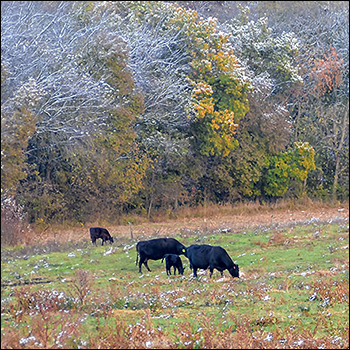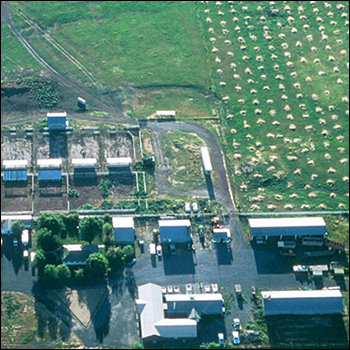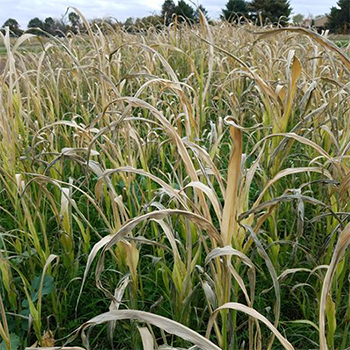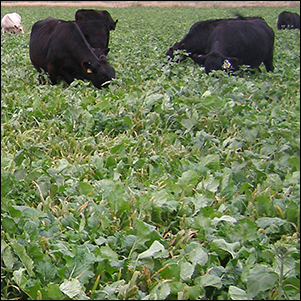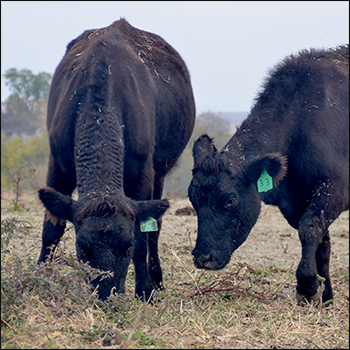
Cattle Market Book Published for Feds
Comprehensive report on U.S. cattle market published for Congress, USDA.
In response to a request from Congress and the USDA, the Agricultural and Food Policy Center (AFPC) at the Department of Agricultural Economics in the Texas A&M College of Agriculture and Life Sciences has completed an extensive report on the U.S. cattle market, including information on supply-chain disruptions.
The 180-plus page book, titled The U.S. Beef Supply Chain: Issues and Challenges, can be viewed on the AFPC website at https://afpc.tamu.edu. It is the result of proceedings from an AFPC-hosted workshop on cattle markets hosted June 3-4 in Kansas City, Mo.
The book puts into context a variety of disruptions in the cattle market, including the 2019 fire that took the nation’s second-largest beef packing plant offline for four months and the COVID-19 pandemic’s effect on packing plants and significant disruption of beef supply chains.
“This is the product of a collaboration between the AFPC and the Office of the Chief Economist at the USDA,” said Bart Fischer, co-director of AFPC and one of the book’s editors. “The work originated from a request by the bipartisan leadership of the Committee on Agriculture in the U.S. House of Representatives during the 116th Congress.”
When preparing this book, the AFPC commissioned papers from noted experts around the country on a variety of topics. Fischer noted that while the book is “admittedly very technical and assumes a working knowledge of the industry,” a definition of technical terms has been provided wherever possible.
About the book
In addressing the overall situation of the U.S. cattle market, the book is presented in 10 chapters to focus on some of its key aspects. The chapters are:
- How We Got Here: A Historical Perspective on Cattle and Beef Markets.
- Price Determination and Price Discovery in the Fed-Cattle Market.
- How Market Institutions, Risks and Agent Incentives Affect Price Discovery.
- Enhancing Supply Chain Coordination Through Marketing Agreements.
- Another Look at Alternative Marketing Arrangement Use by the Cattle and Beef Industry.
- Market Reporting and Transparency.
- What Can the Cattle Industry Learn From Other Agricultural Markets That Have Limited Negotiated Trade?
- Implications of Fed-Cattle Pricing Changes on the Cow-Calf Sector.
- Examining Negotiated Cash Trade Targets.
- Workshop Discussion Summary.
“Although this book is focused primarily on fed-cattle pricing, Congress also asked us to weigh in on packing-capacity issues,” Fischer said. “In many ways, packing capacity and fed-cattle pricing are inextricably linked. As a result, capacity is addressed in a number of places throughout the book.”
The book also notes that while economists offer explanations typically tied to supply and demand relationships, others view such events as evidence the system is broken, particularly as it relates to fed-cattle pricing, said Joe Outlaw, AFPC co-director and an editor for the book.
Outlaw said systemic issues have led to renewed concerns about packer concentration and lack of transparency in fed-cattle pricing and insufficient packing capacity.
“This has also brought about an abundance of legislative proposals from policymakers attempting to address constituent concerns,” he said.
Findings from the cattle market concentration evaluation
“In our discussions among cattle industry stakeholders, the viewpoints on solutions to current concerns about cattle markets were highly diverse,” said David Anderson, Texas A&M AgriLife Extension Service agricultural economist, Bryan-College Station, who contributed to and was an editor for the book.
He noted, however, there was general agreement that price discovery is important to the functioning of cattle markets, including fed-cattle markets.
“But agreement on any related policy changes remains an open question, and there is also concern about the unintended negative consequences of otherwise well-intentioned policy changes,” he said.
Some findings from the AFPC’s evaluation of cattle market concentration include confirming and validating the linkage between fed-cattle pricing and packer capacity.
“With respect to fed-cattle pricing, research shows that alternative marketing arrangements do not create market power because they do not change underlying supply and demand fundamentals,” the report stated.
Although not necessarily a popular position, most research confirms that the benefits to cattle producers due to economies of size in packing largely offset the costs associated with any market power exerted by packers. Research indicates there is market power, but its effect has been small.
Findings from the fed-cattle pricing and packing-capacity evaluations
Some key findings from the AFPC’s evaluation of fed-cattle pricing include:
- Innovation via alternative marketing arrangements (AMA) originated with feeders who were attempting to capture value associated with improved quality. There has been tremendous variability in the adoption of AMAs, with the Texas-Oklahoma-New Mexico region by far being the largest users.
- Reliance on formula pricing significantly reduced transaction costs associated with negotiation and induced predictability in the supply chain.
- There was general agreement among the cattle market economists consulted that price discovery in fed-cattle markets is still robust, even though less than 30% of the transactions are from for-cash negotiations.
- Some argue that imposing mandatory minimums on negotiated, or cash, transactions would improve price discovery in the fed-cattle markets and accrue benefits to the cow-calf producer. However, the report notes it could have the opposite effect, potentially imposing huge costs — up to $16 billion according to one estimate in the book — that would be passed down to cattle producers in the form of lower prices.
- While the economists consulted argued that fed-cattle price discovery was still robust, they also noted that additional transparency in general would be good because it could help build confidence in the market.
- While the economists consulted argued that fed-cattle price discovery was still robust, they also noted that additional transparency in general would be good because it could help build confidence in the market.
The AFPC’s evaluation of packing capacity found that the cyclical nature of the cattle business must be emphasized.
“While cattle supplies have outpaced available packing capacity, that will not always be the case,” the report noted. “As a result, anyone who decides to build additional capacity must understand those market dynamics and be aware that packer margins can plummet with that cycle.”
The report also noted the decline in packing capacity is not a recent event, but has occurred over several decades.
“Expansion of small and regional packing capacity needs to be done in a way that is sustainable and economically viable,” it states.
The ever-changing beef cattle industry
“Over time, the cattle and beef industry has evolved significantly, with a growing set of beef products marketed through a vast array of outlets and export markets, as well as an expanding set of specialized beef markets to meet consumer desires,” Anderson said. “However, in all this time, relatively little has changed in relation to the adversarial relationship between producers and packers.”
During the past decade, the nation’s cattle and calf inventory has averaged 92.1 million head, and the net value of trade for all cattle-related markets has been about $1.5 billion annually.
“International trade of beef and cattle continues to grow in importance to the beef cattle industry, with the U.S. being both a major exporter and importer of beef,” he said. “The U.S. is currently projected to be the No. 2 global beef exporter and the No. 2 global beef importer.”
He also noted the COVID-19 pandemic revealed to both consumers and producers that the supply chains for the retail grocery and foodservice industry are “largely separate, very specialized and quite complex.”
“It is abundantly apparent the U.S. cattle and beef industry represents one the most complex set of markets in existence today,” Anderson said.
Editor’s note: Paul Schattenberg is a communications and media relations specialist with Texas A&M AgriLife Communications.


